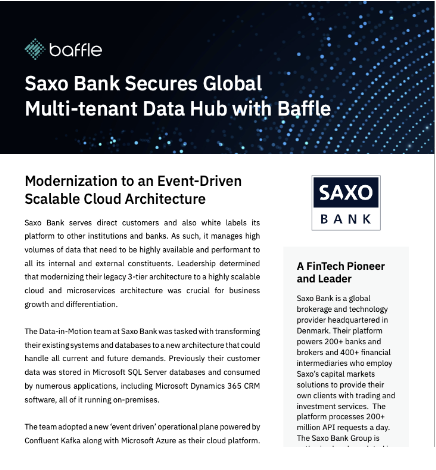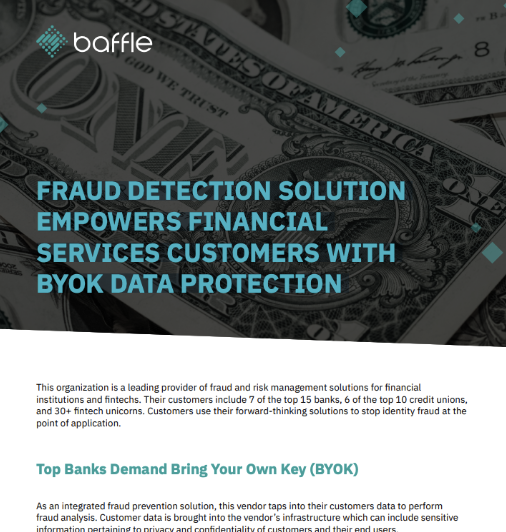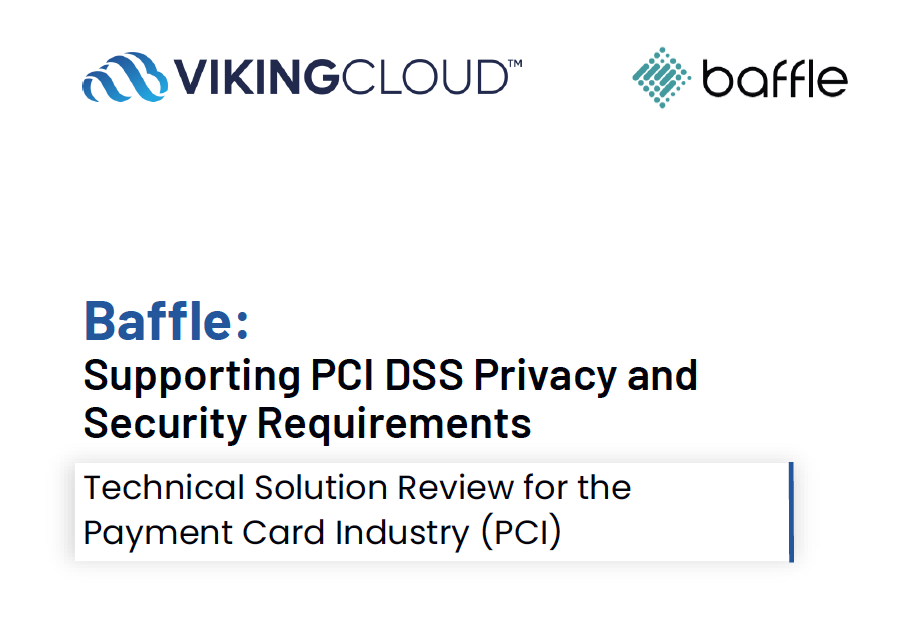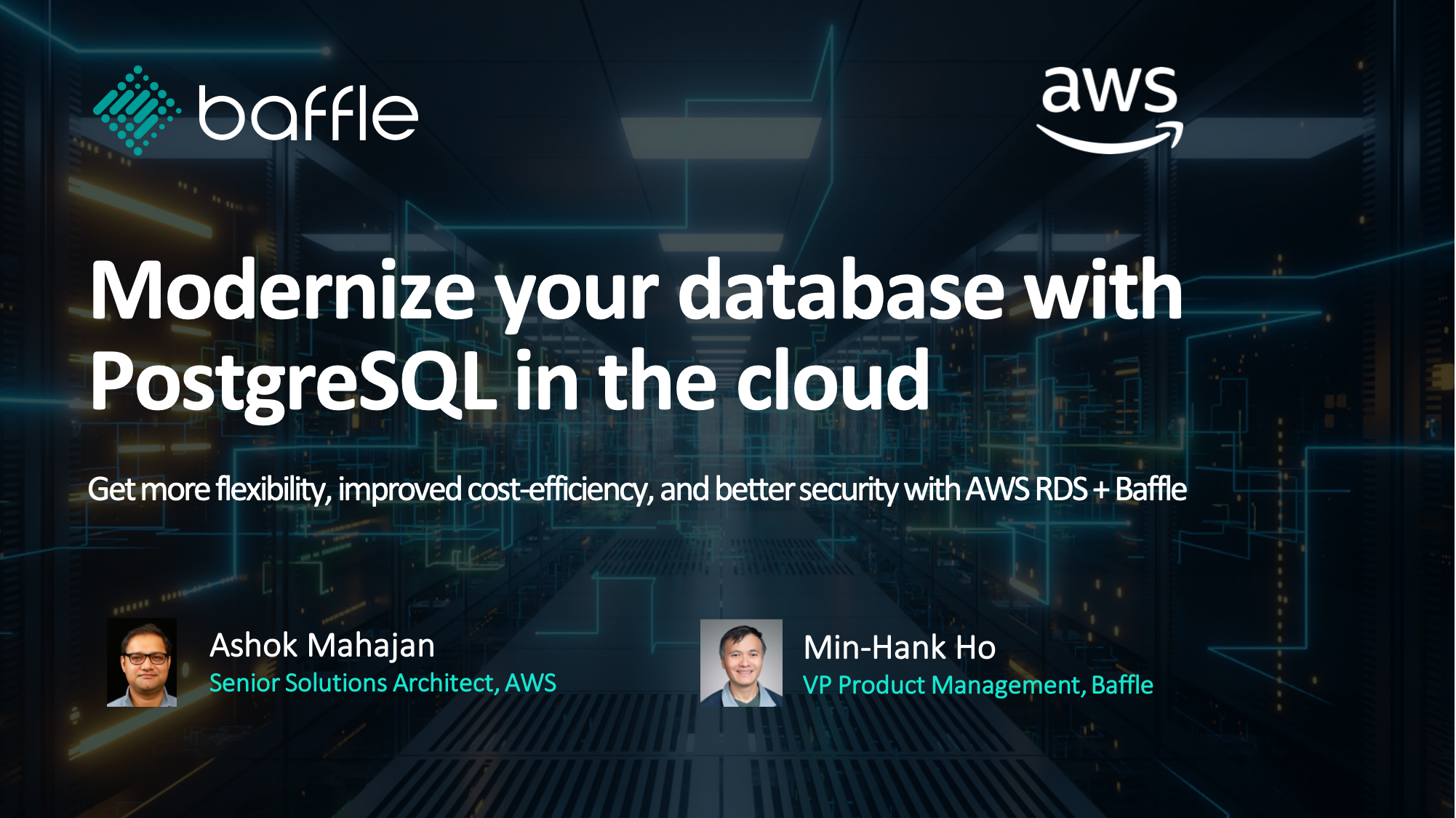Data Security for Financial Services
The security of application-level encryption without all the work
Solution overview
Baffle Data Protection is the easiest way for banks, credit unions, Fintech providers, and insurance companies to protect sensitive data and meet privacy and compliance regulations.
The solution requires no-code changes to your databases, applications, analytics, or AI/ML pipelines. It provides data-centric protection by anonymizing sensitive data and restricting access to the information.
Baffle cryptographically protects the data itself as it’s created, used, and shared across cloud-native data stores. Baffle’s no-code solution masks, tokenizes, and encrypts data, providing the security of application-level encryption without the difficulty, time, and expense.
Key benefits for Financial Services
Compliant
Easily conform with the requirements of GDPR, PCI, CCPA, NIST, and more.
Protect PII
Anonymize all sensitive data and make data breaches irrelevant
Easy
No application code modification required
Comprehensive
One solution for masking, tokenization, and encryption
Fast
Deploy in hours not weeks
Customer Stories
Case Study
Saxo Bank secures global multi-tenant data mesh

Case Study
Global fintech SaaS provider protects sensitive data in multi-tenant cloud

Case Study
Fraud detection solution empowers financial Services customers with BYOK data protection

Customer Quotes
Baffle allows us to execute our vision
Security Architect, Workiva
“Customers are demanding support for Bring Your Own Key (BYOK) to enable ownership of their encryption key material and have control over their data with revocation rights. Workiva is building AWS KMS key management into the core of our platform, where customers can bring in encryption key material and manage it, and then use those keys in conjunction with Baffle. The joint solution requires no large-scale architectural overhauls or application changes, or dedicated databases per tenant. As a result, development time is instead being spent adding even higher value add enhancements instead of modifying the architecture and application, and Baffle allows us to execute on that vision.”
Baffle enabled us to securely transform to a modern event-driven cloud data mesh
Paul Makkar, Director of Data, Saxo Bank
“Baffle enabled us to securely transform to a modern event-driven cloud data mesh. For the first time we could use multiple encryption keys seamlessly and also provide our internal applications a simplified centralized way to de-identify sensitive data.”
Trends and challenges
Compliance
A Tightening Landscape
The regulatory landscape around data privacy and security is evolving at breakneck speed. GDPR, CCPA, and a swathe of other acronyms hold businesses accountable for protecting customer data like never before. Navigating this complex terrain requires stringent data governance practices and robust risk management.
Failure to comply can result in hefty fines, reputational damage, and even business closure. For financial services organizations, compliance is not just a box to tick, it's a strategic imperative.
Data Breaches
A Persistent Threat
Despite sophisticated security measures, data breaches remain a grim reality for financial services. Hackers, cybercriminals, and even malicious insiders target sensitive customer information like account details, credit card numbers, and Social Security numbers.
These breaches can lead to financial losses, identity theft, and erode customer trust. For financial services organizations, preventing data breaches is not just about protecting data, it's about protecting people, livelihoods, and the very fabric of trust that the industry relies on.
AI/ML Applications
Power and Peril
Artificial intelligence and machine learning hold immense potential for financial services, from automating fraud detection to personalized financial advice. However, sensitive information stored in AI model training data exposes significant risks.
Already, GenAI projects have seen massive amounts of data compromised, such as an AI team at Microsoft that accidentally leaked 38TB of private data. In addition, researchers are finding that adversarial prompting can get a GenAI chatbot to reveal PII data in its training set.
Migration to the Cloud
Convenience and Concerns
Moving data and applications to the cloud offers cost-efficiency, scalability, and agility. However, cloud migration introduces new security challenges. Data stored in the cloud becomes an easier target for attackers, and managing security across hybrid environments is complex.
To fully embrace the cloud, financial services organizations must invest in robust cloud data security solutions, establish clear data ownership and access controls, and foster collaboration between IT and security teams.
Schedule a Demo with the Baffle team
Meet with Baffle team to ask questions and find out how Baffle can protect your sensitive data.
Easy
No application code modification required
Fast
Deploy in hours not weeks
Comprehensive
One solution for masking, tokenization, and encryption
Secure
AES cryptographic protection
Flexible
No impact to user experience






